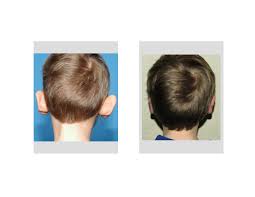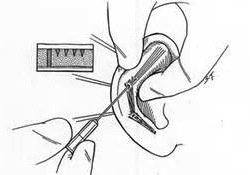
While highly successful, otoplasty is an open procedure requiring extensive postauricular dissection. This results in swelling, discomfort and the possibility of incisional related problems. As a result, like in many other areas of surgery, less invasive approaches have been developed. Known as the ‘incisionless otoplasty’, a technique exists for performing the procedure without making an incision to do so.
In the July/August 2014 Online First issue of the JAMA Facial Plastic Surgery journal, an article was published entitled ‘Incisionless Otoplasty – A Reliable and Replicable Technique for the Correction of Prominauris’. This study evaluated the results of 72 patients (children and adults) who underwent corrected of prominent ears by a single surgeon over a seven year period with an average follow-up of over two and a half years. Ears averaged a total of 2 to 3 sutures per ear. No infections occurred. Complications were seen in ten patients (14%) and included suture failure, suture exposure, and granuloma formation. Nine patients (13%) needed a revision to obtain an optimal aesthetic result. The authors conclude that incisionless otoplasty was well tolerated and effective with minimal complications.

The incisionless technique definitely has a role in otoplasty surgery. But it does require good patient selection as not every protruding ear patient’s anatomic problem lies exclusively with the antihelical fold. Despite not having an incision, it is not complication free as this paper demonstrates. If you had up the complications and the number of revisions, it has a postoperative problem rate of around 20%. This number is certainly no better than that of traditional open otoplasty surgery. But no doubt when it provides the desired aesthetic result and has no after surgery complication or need for revision, it is an improvement over an open method.
Dr. Barry Eppley
Indianapolis, Indiana


